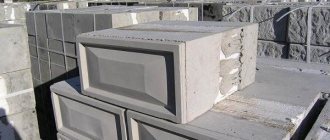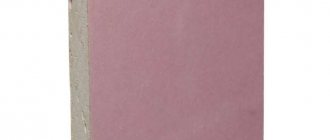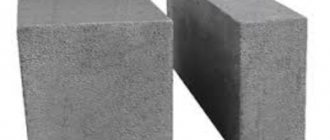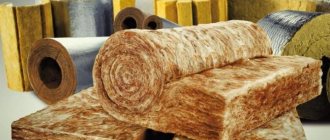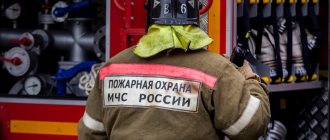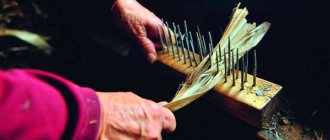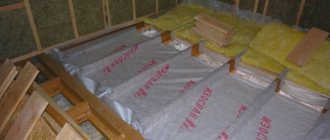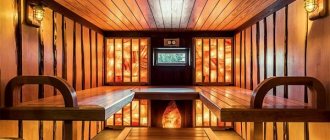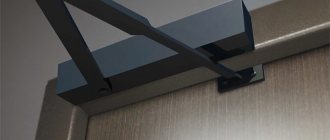Sometimes it is not possible to find a truly professional stove maker. In this matter, it is necessary to take into account many nuances, and any deviation from technical standards can lead to irreparable consequences, which will undoubtedly affect the quality of the structure itself during its operation.
One of the most important points is the selection of masonry mixture. That is why many craftsmen are interested in what composition of mortar with fireclay for laying a stove would be more correct to use. After all, it directly determines whether the structure will be strong and durable.
Ready-made composition for masonry
Properties and characteristics
The feedstock for the production of fireclay clay mixture contains highly dispersed hydroaluminosilicates. Such material is formed into shapeless pieces or pressed into briquettes, fired in ovens under high temperature conditions.
There are a sufficient number of recipes for making fireclay. Fired powder is added to a number of fireclay clay solutions, coarse-grained material is added to others, more water is used in some places, etc. Such compositions differ in the duration of firing and temperature conditions, after which masses with different shades and textures are obtained from the furnaces.
When purchasing fireclay clay, it is recommended to make sure that its shelf life has not yet expired, and that all requirements have been met when storing the material. The fact is that during storage, kaolin loses its properties under the influence of humidity.
Clay is produced in accordance with GOST requirements, and the material differs in the following technical parameters:
- The average grain size is about 2 mm;
- high-burnt fireclay has a water absorption level of 2 to 10 percent, for low-burnt fireclay this figure is no more than 25;
- humidity content – not higher than 5 percent;
- The fire resistance of the material depends on its composition and varies between 1,550 – 1,850 degrees.
What does fireclay clay look like?
A package of fireclay clay for laying stoves, weighing 20 kg, is enough to lay from two to three dozen bricks. The finished mortar mass gains hardness in two days if the air temperature is 10 - 25 degrees Celsius. The fireclay finally gains strength after four weeks.
It is allowed to store fireclay clay material in packaging for three years from the date of manufacture.
It should be added that such clay is characterized by mechanical strength, does not shrink, is considered an environmentally friendly material, is economical to work with, and is not afraid of sudden temperature changes.
What is fireclay clay?
Fireclay is produced from alumina, corundum or zircon silicate by high-temperature firing in a shaft furnace or a special drum. Heating to 1500°C removes water from the silicate base and sinteres the particles contained in the base raw material into solid crumbs.
Fireclay is a fireproof material that is used for construction and decoration.
This cat with a grain diameter of 0.2 to 2.5 mm is the same fireclay clay - an artificially created mineral building material with the following properties:
- Heat resistance according to GOST 390-96 – from 1580°C (PV brand) to 1730°C (ShAK brand),
- Tensile strength – 12-23 N/mm2,
- The natural moisture level of the powder is 5%,
- Moisture absorption – from 8 to 25% (depending on production technology).
The chemical composition of fireclay is based on aluminosilicate (from 28%) and silica (up to 65%). In addition, this material includes oxides of iron, calcium, magnesium, potassium and sodium.
The complex chemical composition, good strength and high resistance to extreme temperatures allow the use of fireclay in various areas of the construction industry.
Scope of use
If we talk about application, fireclay clay is used as an additive to building materials, which reduces plasticity and shrinkage during drying and firing. For example, the addition of fireclay makes it possible to create sculptures whose weight exceeds two hundred and fifty kilograms.
With the help of this material, the ancient era, the art of Ancient Greece, the motifs of Japanese masters, and elements of primitive art are conveyed.
In European countries, fireclay clay is used in facing works to decorate facades, walls, and fireplaces. The industrial sector uses this material to produce refractory bricks, ceramics, various heat-resistant products, and collectible fireclay tiles.
The rough side retains perfect evenness; the effects of abrasions, unevenness and chipping are created on the front surface. The final cost of the tile depends on the severity of heterogeneity and curvilinearity.
With the help of refractory fireclay clay, the natural beauty of nature is conveyed, which is something that many people lack now. This means that products made from such material are still in demand today, in the age of fashionable European-quality renovations and perfectly smooth surfaces.
Fireproof fireclay clay
The material has become popular as a decorative finish in world architecture. Its quality has been tested by time, and we can confidently say that fireclay is reliable.
How to make chamotte-based plaster
Solutions for plastering stoves or walls are prepared using a similar technology:
- Take a trough or other container with a flat bottom.
- Fireclay from bags and ordinary sand are poured there in a ratio of 2:7.
- The dry mixture is poured with water and left alone for three days.
- Portland cement is added to the mixture. At the rate of 1 part cement to 2 parts fireclay.
- Beat the solution using a construction mixer, trying to obtain a creamy consistency.
After this, fireclay plaster can be used for several hours. Therefore, for large volumes of finishing, there are several containers with the soaked composition on the site.
The prepared plaster should be used within several hours
In terms of application, such plaster is similar to starting compositions based on gypsum. After all, the size of fireclay grain can reach up to 2.5 mm. But only fine-grained sand is added to the composition. Moreover, the proportion 1:4 must be strictly observed. Otherwise, the plaster will lose its viscosity and quickly crack.
In addition to sand, additional ingredients can be mixed into the plaster. For example, PVA glue - it accelerates the hardening of the finishing layer, which hardens in natural conditions within two days. In addition, before applying to the wall, additional Portland cement can be added to the plaster at the rate of 2 kilos per bag of fireclay. It also helps speed up the hardening process of the solution.
But to increase the strength characteristics of the mixture, experienced plasterers recommend mixing up to 150 grams of ordinary table salt into each bucket of mortar, thoroughly kneading the salted composition with a mixer. In this case, the plaster will be more durable.
If it is necessary to achieve the plasticity of fireclay plaster, a composition such as liquid glass is poured into a trough with a solution. But the volume of the additive should not exceed 3% of the volume of the mixture.
Advantages and disadvantages
Fireclay material has certain advantages that you need to know about if you want to work with it:
- clay has a high heat resistance;
- good adhesion of the material allows for excellent adhesion to the surface of any material;
- the vapor permeability indicator allows the solution to pass wet vapors through its layer, accumulate them inside and, if necessary, return them again, regulating air exchange;
- long operational period. Fireclay clay does not crack on its surface for a long time, is resistant to crumbling, and does not change its initial parameters and shape for many years;
- This environmentally friendly material does not pose any danger to the human body.
It's fair to say. That with all its advantages, fireclay clay has certain negative qualities:
- it is difficult for novice craftsmen to mix a high-quality solution;
- the cost of clay is high, which distinguishes it from simple types of clay.
Sometimes it is impossible to complete a particular construction task using traditional materials. There are situations where some designs require a high level of heat resistance. In such cases, they use a special building material - fireclay clay, the uniqueness of which is determined by the technological manufacturing features that give the material resistance to high temperature conditions.
It should be noted that in order to successfully solve construction problems, the preparation of a solution from fireclay clay must be carried out in accordance with the instructions. In addition, it is recommended to adhere to the correct proportions; prepare the fireclay clay solution in small quantities, as it hardens quickly.
Plastering process
A solution of refractory clay is used in cases where it is necessary to obtain a perfectly flat surface. In the process of work, corners and a special profile are necessarily used. Several profiles installed on one wall help to achieve absolutely even plaster. During the installation process, it is recommended to use a plumb line or building level. Corners are used to obtain smooth edges; they are glued directly to the plane.
To obtain a perfectly flat surface, you should use the rule. It is fixed across the vertical profiles so as to achieve simultaneous contact of all beacons horizontally.
When installing beacons, you should also pay attention to the level of extension of the furnace door and the blower. The level of the profiles and doors must match so that the surface is smooth, without protrusions and depressions.
Tags: dilute, solution, fireclay
« Previous entry
Cooking instructions for different uses
Many who have worked with fireclay clay often encountered certain difficulties, not knowing how to dilute this material. The strength of the masonry did not always meet the requirements; the plaster cracked and crumbled.
As a rule, this was due to violations made during firing, during which the kaolin clay lost its plasticity. But this problem can be solved by preparing the solution. You should take a special adhesive composition or simple quartz sand and add it to the solution. Before use, the fireclay material is mixed with ordinary water; the ratios are determined taking into account how the solution is planned to be used.
For fireproof masonry
Fireclay clay for laying stoves is prepared as follows. Take a large container in which clay, sand and water are mixed. For ease of use, it is recommended to take a tank of ten to fifteen liters.
The readiness of the solution is determined as follows: take a trowel and scoop out a little mixture. If the solution flows slowly, leaving no traces, then the mixture is ready for use.
Laying the furnace with fireclay clay
Although clay for laying stoves is considered a natural material, safety requirements must be observed when preparing the solution. It is necessary to ensure that drops of the mixture do not fall on exposed areas of facial skin. When working indoors, consider ventilation.
Chamotte-based plaster
When preparing a plaster mortar, choose the material carefully. The quality of fireclay powder depends on the manufacturing technology and the size of the fractions. To avoid mistakes, you need to check the labeling. If there is o on the packaging container, then kaolin brick material that has defects was used in production. This significantly reduces the cost, but it is not recommended to use such material for precise and critical work. The composition can be of several options:
- fireclay sand and kaolin in a ratio of 2 to 1;
- the same sand and blue clay at a ratio of 4 to 1.
If simple sand is placed in the solution, cracks will appear because it will expand due to high temperature. You should not use river sand, because it does not contain the components responsible for reliable adhesion.
If Portland cement is added to the mortar mass, its strength increases several times. But the fire-resistant properties of the clay itself are reduced.
How to prepare a solution for plaster? For this you will need a mixing container, PVA, water, kaolin. Powder is poured into the container, water is slowly added until the kaolin is completely covered. You must act carefully so as not to make the solution liquid. After this, you need to wait three days for the mortar mixture to infuse.
The mixture is checked for quality and suitability for use. If the composition is runny, add sand and soak the thick mass with water. As a result, the clay should have a consistency similar to sour cream. PVA is added to the material that meets the requirements to increase ductility and strength. In addition, craftsmen advise adding fine-grained fiberglass.
Since clay does not have good plasticity, a mesh is attached to the surface intended for finishing and treated with a primer.
For decorative ceramics
Fireclay clay material is popular among design specialists for its special textured solutions and beautiful appearance. Figurines, tiles, dishes and other items are made from it. Products made from fireclay clay can be an excellent decoration for any interior design.
This is all due to the fact that fireclay material, if you add certain components to it, acquires good ductility. Many people like it for its environmental safety, because it does not contain harmful toxic substances.
In order to create artistic ceramics, plastic clay of various compositions is used, adding fireclay chips to it, which accounts for about forty percent of the total volume.
When making artistic ceramics, the master creates a sketch, then makes molds and fills them with a clay mixture. Then everything is sent to dry. The process takes a long time, since everything happens naturally so that the geometric shapes of the product are not disturbed.
There are no specific instructions for using fireclay clay. But when you are not confident in your own abilities, and there is no special knowledge on preparing fireclay clay with your own hands, you should entrust the job to an experienced specialist.
How to prepare a solution for refractory masonry
For each refractory brick in the furnace masonry, about a kilogram of fastening mortar is needed. Typically, a 20-kilogram bag of fireclay is consumed after laying a maximum of 30 bricks. And per cube you need at least five of these bags (100 kilos of solution).
The preparation of the mortar that holds the bricks together follows a special scheme. First, the dishes for kneading are selected. This dish should have low sides and a bottom with as large an area as possible. The ideal option is a trough or an old bathtub.
Crushed fireclay and quartz sand are poured into the bottom of the trough. Composition proportion: 1 part clay to 2 parts sand for laying fireboxes and chimneys. Use a different proportion for laying the body of the stove: 1 part clay to 3 parts sand. However, if a stove maker assembles a small hearth, then it makes no sense to prepare a separate composition and then use a 1:2 ratio (fireclay: sand).
Based on the final volumes, you can focus on the above proportion - 100 kilos per cube of brick (5 standard bags). Moreover, the bags may not contain pure fireclay, but a ready-made mixture. There is no need to look for quartz sand for this composition.
Well, then, as the instructions say, water is added to the mixture, which should saturate the dry composition and cover it to the depth of the first phalanx of the index finger. After this, the trough is left alone for 2-3 days, giving the dry mixture time to absorb moisture.
That is why the stove maker does not need to make separate portions of the mortar, as is the case with cement and plaster; the entire volume sufficient to complete the masonry is prepared at once. After all, the composition that has absorbed moisture will dry out within two days.
Then you need to take a construction mixer and mix the solution until the consistency of a thick cream. Moreover, it is worth adding water to too viscous compositions, and to an overly liquid mixture you can add a thick solution soaked in a separate bowl or a little quartz sand.
The technique of laying fireclay does not differ from a similar technology for building walls or foundations. The recommended thickness of seams is no more than 10 mm.
The difference between chamotte and ordinary ceramic bricks
Fireclay brick cannot be confused with any other block, even with other refractories. Mostly yellow or even light yellow in color, with a whitish tint. The main difference between fireclay bricks is the high content of aluminum oxide in various chemical forms and modifications.
In comparison with ceramic bricks, with a high content of iron oxide and silicon oxide, fireclay bricks have their own characteristics that affect their durability:
- The surface of the block is highly porous, but these pores are very small; the solution penetrates poorly into them, but moisture and air penetrate well;
- The coefficient of thermal expansion of each brick is strictly individual, which will require difficult and painstaking selection of the composition of the mortar for masonry;
- The refractoriness and ductility of fireclay bricks largely depends on the operating mode of the furnace, and not on the composition of the mortar or the method of laying.
Advice! For lining one furnace, you cannot use fireclay from different batches or a set of randomly selected bricks; in extreme cases, different types can be converted into broken or fireclay powder.
Preparing the necessary materials
First of all, it is necessary to dwell on one point. Thanks to technological progress and the widespread production of building materials, there is currently one technique using which it is not difficult to prepare clay for laying a stove.
The technology is suitable for those people who do not have practical experience in this area, as well as for those who decided to invest once, build a brick structure in their home and never worry about it again.
We are talking about a wide range of ready-made masonry mixtures. They are available for free sale and are packaged in branded bags. All you need to do is purchase the required amount of material and, using the recommendations on the packaging, dilute it correctly.
First of all, it will be necessary to obtain clay of the type that is available in a particular region. It will be most convenient to stock up on it in those places where mining has already been carried out on the ground, in ravines or under the river coastline.
We invite you to familiarize yourself with: The interior of a bathhouse is an example of interior decoration in the Russian style
After the raw materials have been extracted in the required quantity, they should be transported to the place where the structure is supposed to be erected. Fireclay clay is poured into a prepared container and filled with water. Liquids and material should be taken in a ratio of 1:4 according to volume. Soaking lasts for 48 hours.
The hammer drill makes the job much easier
Next, you need to strain the mass through a mesh with cells measuring 3x3 mm, which will make it possible to rid the material of various impurities and stones. Unfortunately, it is almost impossible to obtain sand in the same way. Firstly, it lies deep, and secondly, it can be punishable by administrative liability, so it is better to buy it legally.
A high-quality solution can only be made if you use dry sand, preferably pre-cleaned. Adding wet material is not acceptable, so if it gets wet, it needs to be given time to dry. When the mass is dry, it is also sifted through a mesh with cells of about 1.5 mm.
Once you have figured out what fireclay mortar is, and have also prepared all the components, you can begin the mixing procedure.
Application
Refractory types of clay are used to produce molding mixtures, bricks, plaster compositions, and masonry mortars. For the manufacture of each type of product, a specific brand of fireclay clay is selected, taking into account the technical characteristics and price.
Furnace laying
The most popular products are refractory bricks, which are used to lay out the most critical parts of stoves.
Only fireclay types of brick products can withstand maximum furnace temperatures. The remaining kiln layers are usually made from cheaper ordinary bricks. Masonry compositions must have the same coefficient of expansion when heated as the main brick of the firebox. Therefore, mixtures based on refractory clays are used to prepare solutions.
Before starting work, you should make a calculation, taking into account that for one hundred bricks you need to make approximately 3 buckets of masonry mortar
To prepare mixtures that fix bricks, a clay product with a significant concentration of sand is used. When the mass fraction of silicon oxide is equal to 55%, the clay is called a binder; from 19% to a maximum of 48% - smooth. When the sand concentration is less than 21%, the refractory clay is considered depleted.

